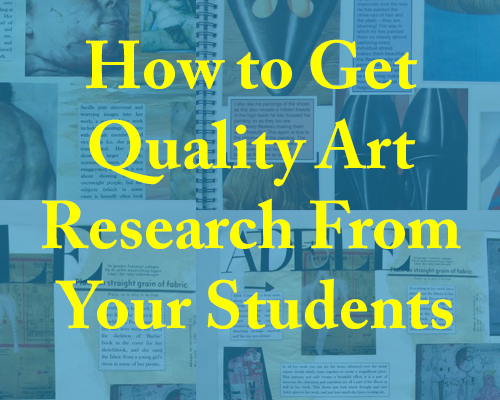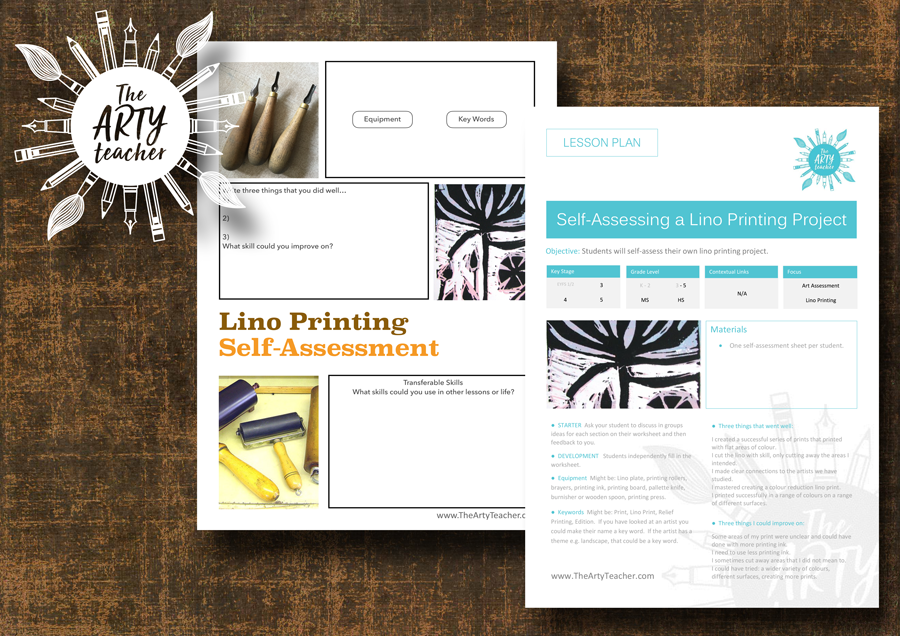
How to Get Quality Art Research From Your Students
Isn’t it annoying when you see a beautifully presented research page and then quickly realise the information is just chunks of info that have been cut and paste from the internet? Where’s the stickability in that? They are not going to retain it for long. How do you get quality art research from all of your students? Here are a few solutions for extracting quality research from your classes.
Set Questions
I’ve been guilty of saying “Research 10 facts on [insert artists name here]” and this has produced exactly the wrong result described above. A much better approach is to set specific questions that you would like them to research. Of course, this is time-consuming, but once you have created them for a particular artist, you’ve always got them, and it makes your students hunt for the information.
You might want to give them a passage of information to work from or to direct them to a particular website. There are many child-friendly websites such as Ducksters that have artist biographies.
Crosswords
I have used crosswords for the homework prior to asking students to make a research page on an artist. This way they have already done some research and it usually raises the quality of the information or annotation on the research pages. There is a growing bank of crosswords on The Arty Teacher just click the image below to learn more.
Teach About Chronology
The sort of research pages I ask students to make have pictures and facts spread across them. I’ve seen a few research pages over the years where students tell me all about an artists death and then they go on to tell me, lower down the page, about an exhibition the artist has had. Was this the ghost of the artist? Teaching your students about how we scan down a page from top to bottom and from left to right is a good idea.
Personal Response
How do you get quality art research that includes a personal response? Do you want your students to add their personal response to a research page or do you just want facts? If you want a personal response, what do your students think about the artists work? Do they like or dislike it? Can they talk about a particular artwork that they like? Do you want them to include subject-specific language? If they had to make work in the style of the artist what would they create? The year group or grade you teach might influence what approach you take.
Assessment
Explain how you will be assessing the research page that they create. This could be a simple list of what needs to be included plus extra marks for presentation. You or your school might want to have an emphasis on grammar and punctuation. You might want to highlight that neat cutting out and sticking down of the artist’s work is part of good presentation. You might want them to reflect the artists work in the way they create the research page. Different art departments have different ways of doing things. Sharing what you are looking for and how it will be assessed is good practice and will appeal to students who are hungry for good grades. Having a good example to show them is a great way to raise the standard. There are many assessment resources for art teachers on The Arty Teacher website.
Art Literacy
Are there keywords that you would like them to include? If I was asking students to create a research page on Matisse I might insist that their work includes the words Fauvism, oil paint, France or French, and Cut-Outs. You could take this approach with many artists and topics to make sure literacy is embedded in the homework you set.
Stand Up – Sit Down!
This is a fun game to encourage in-depth research and longer-term retention of information. You ask your students to research a minimum of ten facts about an artist. They can do this in rough at the back of their sketchbooks. You tell them that they will be playing a game at the start of the next lesson and that they will not be able to look at their facts when they play it. At the start of the next lesson, you give them 3 or 4 minutes to look at their facts. This acts as revision as they have already researched these facts at home. Research shows revisiting information is essential to remembering information. You then ask them to close their books. Then, all the students stand up. You randomly choose a student to say the first fact. They say it and then choose the next student to say a fact. To start with, they have to choose a student who has not been chosen. Each student states a fact until they can’t. When they can’t they have to sit down. The choice goes back to the previous student to choose another student. Eventually, only a few students will be left standing and you keep playing until there is only one student left standing and they are the winner. My students have loved this game!
The download below ‘Research Page Do’s & Don’ts’ is an editable list of things you would like your students to include on a research page and things you would like them not to do. I get all my students to stick this in the back of their sketchbooks and it has really raised attainment.
I’m certain if you use some of these strategies you will see quality art research pages coming your way. I’d love to hear what strategies you’ve found success with. Please comment below to share your good ideas with art teachers around the globe!










